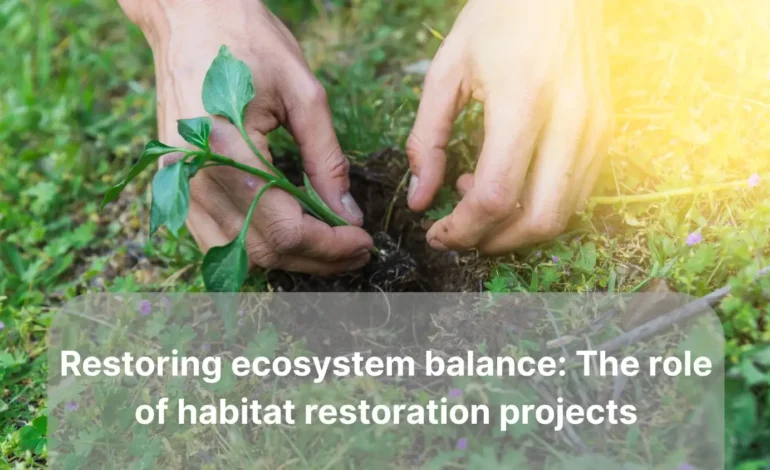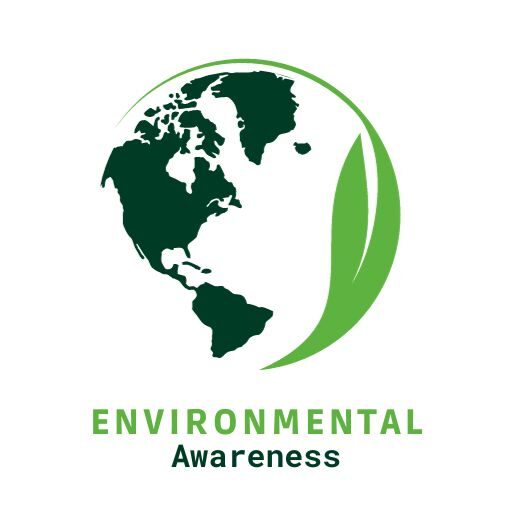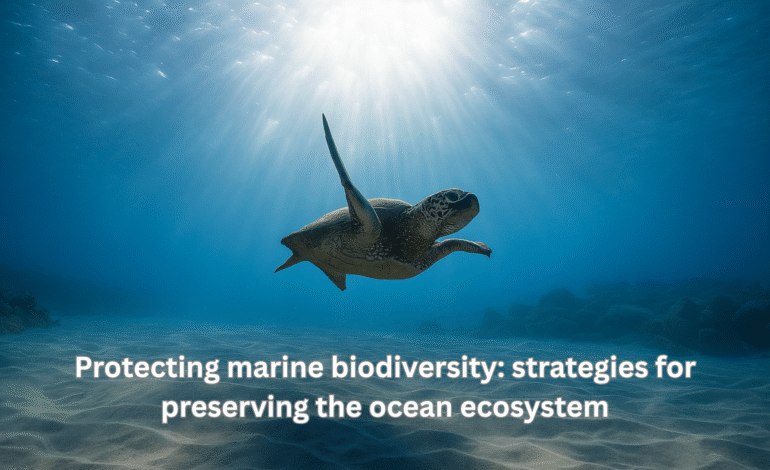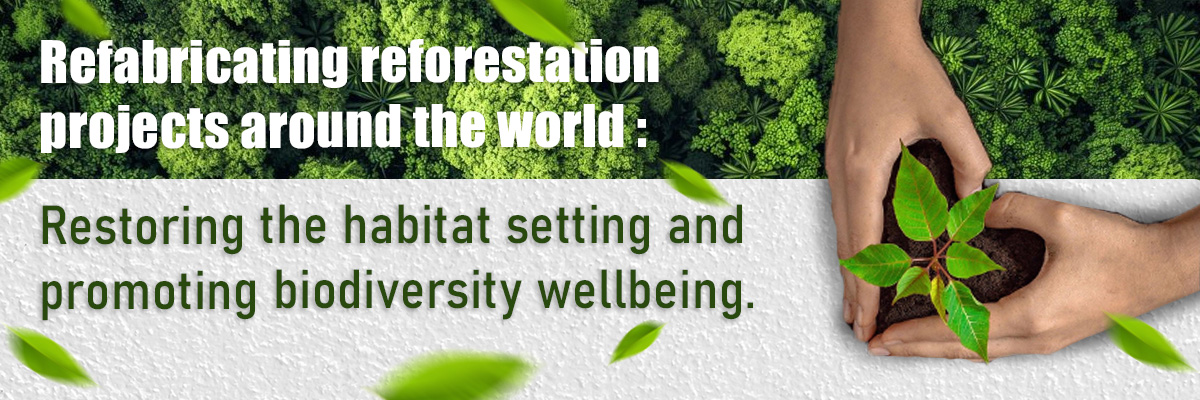
7 Powerful Ways Habitat Restoration Projects Rebalance Ecosystems
Habitat restoration is a purpose-oriented rehabilitation of an area to recreate a well-established ecosystem, which may include a plantation scheme such as replanting vegetation, replenishing the soil, and re-establishing and reformulating natural processes to recreate an essential ecosystem.
By restoring the habitat, biodiversity is protected, ensuring the sustainability and resilience of the ecosystem and its species. There have been many habitat restoration projects carried out with the sole aim of restructuring and repairing the site in nature, whose biological communities (the thriving place of many species in a given location).
The prime focus of the habitat restoration projects is to minimize the effects of human activities and restore them to their earlier state or phase. The ecological restoration is primarily different from environmental conservation, which mainly believes in preventing further deterioration.
Habitat Restoration Project Benefit:
Nature has its incredible way to restore its lost essence in a natural way, not man-made. It needs human feelings and mind to recreate the lost habitat and the species. To ensure that the future generation gets a revamped, healthy, green, and clean ecosystem.
In a worldwide forum, there are communities, scientists, and conservationists who are working together to restore forests, wetlands, coral reefs grasslands that have suffered the harsh climatic conditions, deforestation, pollution, and change of habitat. The main goal is not just to re-establish the beautiful paradise of the ecosystem, but to rebuild the broken chord that exists between the wildlife and human beings, which has existed from time immemorial.
Sunderban’s Mangrove Restoration
Protecting the world’s prominent mangrove forest (West Bengal, India), the primary focus of the project is to restore the mangrove ecosystem, which includes tiger conservation, building resilience against the sea level, and enhancing the livelihood of the communities.
- Replantation of mangrove saplings.
- Protection of the Bengal tiger and enhancing wildlife species.
- Building of new infrastructure to maintain the water level rise.
- Creating job opportunities for the resident communities.
The Thol Lake: Restoration of The ecosystem
It is situated near Ahmedabad, Gujarat is considered an essential wetland system. With modern advancements, there has been an increase in the pollution level and urban sprawl, which threatens ecological health. The project works at revamping and conserving the lake ecosystem, which works at enhancing the water quality promotion of economic tourism and engagement of local communities in the conservation process.
- Various plants have been set up to treat the wastewater before it enters the lake.
- Creation of a healthy ecosystem awareness campaign.
Western Ghats Forest Restoration
The Western Ghats are known to be the Amazon of India, which has gone through extensive deforestation, fragmentation of habitat, and degradation. The WGFLR (Western Ghats forest landscape restoration) project’s objective is to reverse the prevalent trends.
By reviving the natural forest, which in turn would help in carbon sequestration as part of the climate change initiative.
They are engaging the local people to participate actively in the project through tree plantation.
Restoring Ecosystem Balance Strategies
Effective measures are needed to address environmental degradation, which threatens biodiversity and disrupts natural processes. Human activities have impacted the natural habitat negatively, and we need to formulate several strategies to rehabilitate these areas, which is needed to be done for wildlife restoration.
There are diverse restoration techniques that pacify the needs of different ecosystems; they revamp the natural habitat by addressing the unique, challenging issues.
Reforestation
Restoration involves the replanting of trees where the forest land has been depleted. This strategy is unique for restoring the forest ecosystem, which is crucial for carbon sequestration bio biodiversity, and climatic regulation. The core principle in ecological restoration is the emphasis on native species.
Wetland Restoration
Wetland restoration focuses on rehabilitating these unique ecosystems, which are important for water filtration, flood control, and providing shelter and forming habitat for a wide range and species. The restoration of wetland, the ecological functionality proliferates.
Coral Reef Rehabilitation
It restores the vibrant underwater ecosystem, which is crucial for marine biodiversity and coastal protection. The various strategies for coral restoration involve the transplantation of small coral pieces on the degraded reefs. The Coral Restoration Foundation is working to restore coral reefs and promote their resilience in the face of climate change and other global challenges.
Role of Keystone
They play an indisputable role in maintaining the structure and integrating the ecosystem; they fulfill the cardinal ecological role. The restoration projects reintroduce and protect the keystone species can aid in the recovery of degraded habitat. Their presence re-fabricates the ecological processes and interactions that are fundamental to ecosystem stability.
Soil Microbial Recovery
The recovery of soil microbiomes is an intricate system of ecosystem restoration, as their microbial communities play an important role in nutrient recycling, maintaining plant health, and enhancing economic productivity. The microbial inoculation technique is beneficial where the needed microbes are introduced to the soil and can re-establish this diversity.
Successful Habitat Restoration Cases
Costa Rica Revamping Project
In the latter half of the 20th century, Costa Rica went through extensive deforestation as vast areas of rainforest were cleared for the agricultural process. It led to biodiversity loss and environmental degradation. There were scores of innovative methodologies that transformed it into a global model. Costa Rica introduced forestry laws, and financial incentives were given to the landowners. This initiated sustainable land use practices.
It also invested in ecotourism, and the revenue collected was invested in a conservation project.
The government enacted strict anti-deforestation laws, which were supported by a proper enforcement mechanism that promoted responsible land management. This marked the country in sustainable development.
Thames River Clean Up
Once it was declared non-existent in 1957 due to severe pollution, the River Thames in the U.K. has undergone a remarkable transformation, which has emerged as an effective environment restoration.
Over approximately 4 decades, there have been joint efforts in wastewater treatment and agricultural management that have led to approximately 80% led to reduction as phosphorus loads, and enhanced the water quality.
Improved water conditions have facilitated diverse wildlife. The Thames now possesses different species of fish, birds, and other animals, and many citizen-led initiatives have also played a crucial role in the survival.
Conclusion
Habitat rehabilitation has become a global call. All the nation-states are forming communities to rediscover and reestablish the natural habitat in a modernized yet conventional form. There has been an urgent need to rehabilitate the habitat and ecosystem restoration as the communities are formulating innovative strategies to revitalize the natural environment.
The comprehensive efforts work to boost biodiversity and promote sustainable practices. The efforts are action-oriented, which target reformative benefits that prioritize ecological health.
The urban forestry management emerges with a faster resilient economy. The local communities take great interest in bearing the responsibilities of the ecosystem and bringing changes in the right direction. By embracing the right path, society can bring forth the right changes and innovative solutions.



